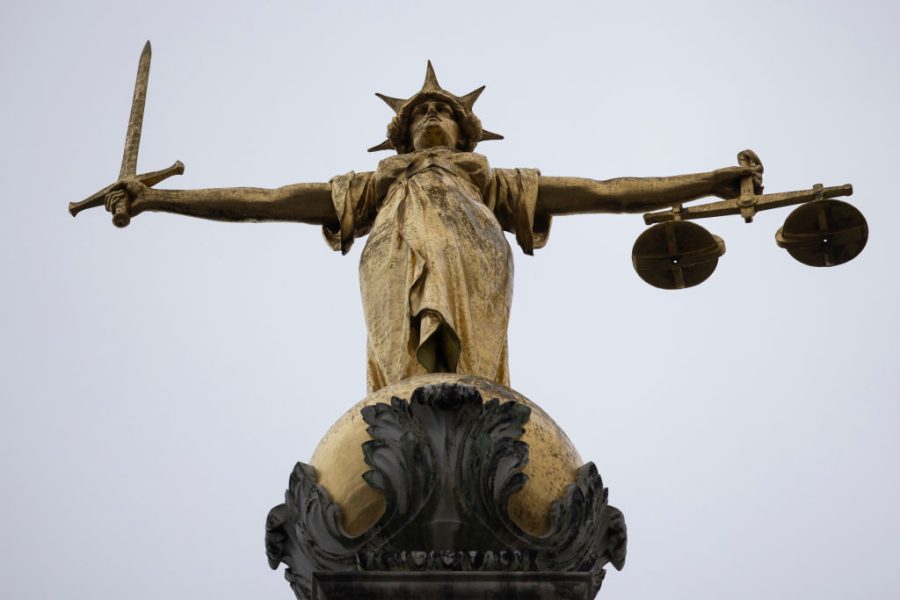Parliament has voted to proceed with Kim Leadbeater’s assisted suicide bill, which will see the NHS offer terminally ill people the opportunity to kill themselves and the lethal drugs with which to do so. The debate over assisted suicide is complex and often heated, with sincere and well-intentioned people approaching its profound moral and ethical quandaries from very different but passionately held perspectives. I would like to set those questions aside for now and ask a different but related one: if the state can help end the lives of terminally ill people, why shouldn’t it end the lives of murderers?
The state can now be a party to the premature death of a citizen
The last time capital punishment was used in the UK was 1964. It was suspended the following year and abolished for murder in 1969 (1973 in Northern Ireland). A handful of crimes including treason remained capital offences but the death penalty was removed entirely from the statute books in 1998. Protocol 13 of the European Convention on Human Rights prohibits it ‘in all circumstances’. To reintroduce capital punishment, the UK would have to withdraw from the ECHR (and the Council of Europe) and repeal the relevant provisions of the Human Rights Act.
But we’re not talking about law here, we’re talking about life. Objections to the reintroduction of capital punishment typically fall into one of five categories: 1) the death penalty is inherently wrong because it is the intentional destruction of human life by the state; 2) the death penalty is prone to errors in the justice system and can lead to execution of the innocent; 3) the death penalty cannot be safely administered because doctors cannot participate in killing; 4) the death penalty might be administered in a way that is inhumane or superadds to the pain of death; and 5) the death penalty is uncivilised and reduces any society which uses it.
How does Leadbeater’s bill interact with these principles? Well, it establishes that there are circumstances in which the state can intentionally destroy human life, albeit as a supplier of the means of death rather than administering those means itself. It says the state is capable of designing safeguards that allow it to participate in killing without fear of error or abuse. It says health professionals can help to facilitate medically-induced death without it being unethical. It posits premature death not as a source of cruelty or pain but as a remedy for it, implying that there is a humane way to end human life. It suggests that permitting assisted suicide is a progressive step towards a more enlightened society in which people enjoy more autonomy over their bodies and their lives.
A number of things follow from this. The convention that the state should not kill outside of war has been shattered. The state can be a party to the premature death of a citizen. This leaves only the level of involvement (supplying lethal drugs versus actively administering them) and free will (voluntary suicide versus involuntary execution) as the major moral hurdles to capital punishment. I’m not suggesting that assisted suicide makes the case for capital punishment, I’m suggesting that it makes it easier to make that case.
Advocates of the death penalty can also take succour from Leadbeater’s much-touted safeguards. If the NHS can guarantee that no one will ever be mistakenly granted assisted suicide, the justice system should be able to study these measures and adapt them to guarantee that no one will ever be mistakenly executed. After all, a murderer would get a trial, an appeal and the possibility of clemency before being executed, a more rigorous regime than the one proposed for terminally ill patients.
Until now, one of the barriers to restoring capital punishment was the implications for the medical profession and its ethical codes. Helpfully, Leadbeater’s bill establishes that it is possible for the state to operate a life-terminating process in which medics are not ‘under any duty (whether arising from any contract, statute or otherwise) to participate’. If doctors can volunteer to assist in suicide, they can volunteer to assist in executions.
Those among us who are not sadists would agree that, if we are to hand down death sentences, they should be carried out in a way that minimises pain and suffering. Here assisted suicide is once again very helpful. For if the state has found a safe, humane and lawful way to end the life of a terminally ill patient, it has also found a safe, humane and lawful way to end the life of a convicted murderer. Hanging was the method previously used in the UK but assisted suicide will provide plenty of case studies in which drugs work best for ending life with dignity.
And those fusty old liberals of the 1950s and 1960s who urged abolition because the death penalty brutalised society as much as it did the condemned man? They said that, however much murderers might deserve a rendezvous with the rope, Mr Pierrepoint was under contract to the state and that made us all a party to killing. Thankfully we’ve moved on from such hand-wringing. Assisted suicide would be, at once, the state facilitated termination of human life and a personal choice the rest of us have no business questioning. It is possible, then, for us to have a death sentence and for it to have no moral relevance to anyone not directly implicated.
Just one more thing, as Columbo liked to say. Supporters of Leadbeater’s bill have been keen to draw our attention to polls suggesting public support for the legislation. Which is odd because these seem to be the very same people who ordinarily dismiss appeals to popular feeling as dangerous demagoguery. Still, if public opinion is back in fashion, shall we see what it has to say about stringing up baddies? Since 2019, there have been 34 YouGov polls on whether the death penalty should be restored for child murder. In 27 of them, a majority said yes. In the other seven, there was a clear plurality in favour. Meanwhile, polls consistently show support for executing terrorists (56 per cent to 33 per cent just last month) and multiple murderers (currently 56 per cent for, 34 per cent against).
Sixty years on from Britain’s last hangings (thus far), the movement to restore the death penalty appeared to be dead beyond revival. Then along came Kim Leadbeater with her legislative sledgehammer, merrily thumping away at the load-bearing walls of human life ethics. She might consider her cause progressive but in its logic it clears a good stretch of the way for those who would see the black cap return to the English bench.
I am not one of those people. I am heartily opposed to the death penalty, and have argued against its use in this country, the United States and Israel, because it violates the consistent life ethic. The Catholic writer Eileen Egan, a pioneer of that ethic, said: ‘We view the protection of all life, from its conception to its end, as a seamless garment.’ The reference is to John 19 and Christ’s seamless tunic, which the Roman soldiers cast lots for rather than rend, but you need not be a believer to appreciate the point. Our ideas of human life are a moral fabric and when you tear at one part, you loosen threads of dignity and conscience that you never intended to disturb.
When parliament votes to allow the state to help kill some of its citizens, it doesn’t end a debate, it starts one. Which other citizens may the state kill? In what circumstances? To what end? Without realising it, MPs have rended the garment and left the lots to fall where they will.








Comments